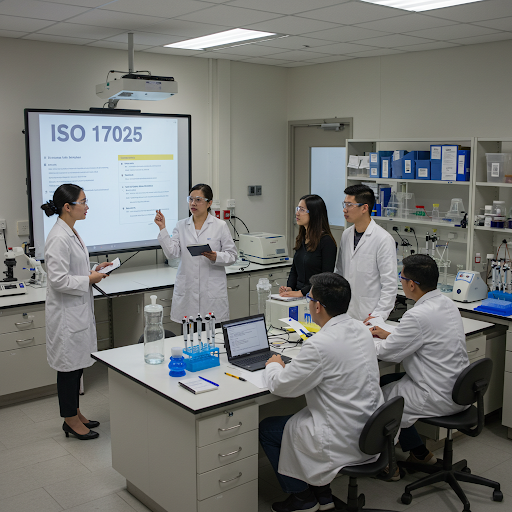You can have the best equipment in the world, a team of experienced scientists, and a spotless lab, but if your results don’t stand up to scrutiny, none of it matters. That’s a harsh truth many labs have had to come to terms with. In a world where data drives decisions—from food safety to forensics to environmental protection—lab credibility isn’t just a badge of honor. It’s the backbone of trust. And that’s exactly where ISO 17025 steps in.
What Is ISO 17025, Really?
At its core, ISO/IEC 17025 is the international standard that sets out the general requirements for the competence of testing and calibration laboratories. That might sound bureaucratic at first blush, but let’s break it down: ISO 17025 is the gold standard for proving that a lab knows what it’s doing—and can prove it, again and again, with precision and consistency.
It doesn’t matter whether you’re testing drinking water, calibrating scales, or verifying materials used in spacecraft. If your lab is ISO 17025 certified, it means your results are reliable, your processes are repeatable, and your team is competent.
Not Just Another Certificate on the Wall
Sure, some certifications look pretty in a frame. ISO 17025 isn’t one of them. It’s earned, not given. And the process? It’s rigorous. Labs have to show, not tell. Auditors look into every nook and cranny—from technical methods to management systems to staff qualifications.
What makes it so robust is its dual focus:
- Technical competence: Can the lab produce valid results?
- Management system compliance: Can it do so consistently over time?
This mix is what elevates ISO 17025 above the pack. It’s not just about one perfect test; it’s about proving you can deliver dependable data under pressure, over and over again.
Why Bother? Because Credibility Is Currency
Let’s face it: Anyone can claim to run a “high-quality” lab. But ISO 17025 certification gives that claim weight. It’s the international way of saying, “Hey, we’re not just saying we’re good. We’ve been tested.”
And that matters. Clients, regulators, and stakeholders are far more likely to trust a certified lab. Not just because of the logo on the report, but because of what it represents—independent verification, proven systems, and reliable outcomes.
In sectors like pharmaceuticals, energy, environmental monitoring, and food safety, this trust can literally be the difference between life and death. No exaggeration.
Behind the Scenes: What Certification Involves
The journey to ISO 17025 certification isn’t a one-day sprint. It’s more like a marathon laced with obstacle courses. Labs have to:
- Understand the standard: Which isn’t always easy. ISO 17025 contains technical language and layered requirements. Most labs invest in specialized training or consultants.
- Gap analysis: Identify where current practices fall short.
- System overhaul: Develop or update procedures, documentation, and tools.
- Internal audits: Test your readiness before the real deal.
- Accreditation audit: This is the big one. An external body evaluates every aspect of your lab’s operations.
- Ongoing maintenance: Because certification isn’t a “one and done” kind of thing.
Honestly, it’s a grind. But it’s a grind worth enduring.
Real People, Real Stakes
Let me paint a picture. Imagine a lab responsible for testing the presence of pesticides in imported fruit. Now, if that lab gets even one result wrong, it could mean banned chemicals slipping through customs. That’s not just a policy failure—that’s potentially toxic produce on someone’s table.
Or take a medical lab running diagnostics for a cancer center. The precision of their data directly influences treatment plans. There’s no room for flukes.
In both cases, certification iso 17025 doesn’t just bolster internal confidence—it shields people from harm and ensures decisions are rooted in rock-solid science.
The Global Language of Accuracy
One of the most overlooked advantages? International recognition. ISO 17025 acts like a passport. It allows test results to be accepted across borders without the need for re-testing. That saves time, money, and hassle.
For multinational companies, that’s huge. It means you don’t have to justify your lab’s validity over and over again. You’re already speaking the world’s language of accuracy.
Certification Is a Culture Shift
Here’s the thing—getting certified isn’t just about ticking boxes. It transforms how a lab operates. Staff start thinking in terms of process control, traceability, and continuous improvement.
It breeds a culture of accountability. And when mistakes do happen (because let’s be real—they will), they’re caught early, addressed quickly, and learned from.
Over time, this kind of mindset pays off. Labs become leaner, sharper, and more respected in their fields.
Is It Worth the Trouble? A Resounding Yes
Yes, certification takes time. Yes, it demands resources. But it also clears a path to greater trust, better business, and fewer costly errors.
For labs that care about their reputation—and the accuracy of what they send out into the world—ISO 17025 is more than worth it. It’s essential.
Wrapping Up: More Than Just a Standard
So, if you’re still wondering whether ISO 17025 certification is worth pursuing, ask yourself this: Would you want to bet your reputation on guesswork? Or would you rather build it on something proven?
Because at the end of the day, ISO 17025 isn’t about compliance for the sake of it. It’s about proving that your lab is capable, trustworthy, and ready to meet the demands of a world that doesn’t settle for close enough. And that’s not just certification. That’s competence made visible.







